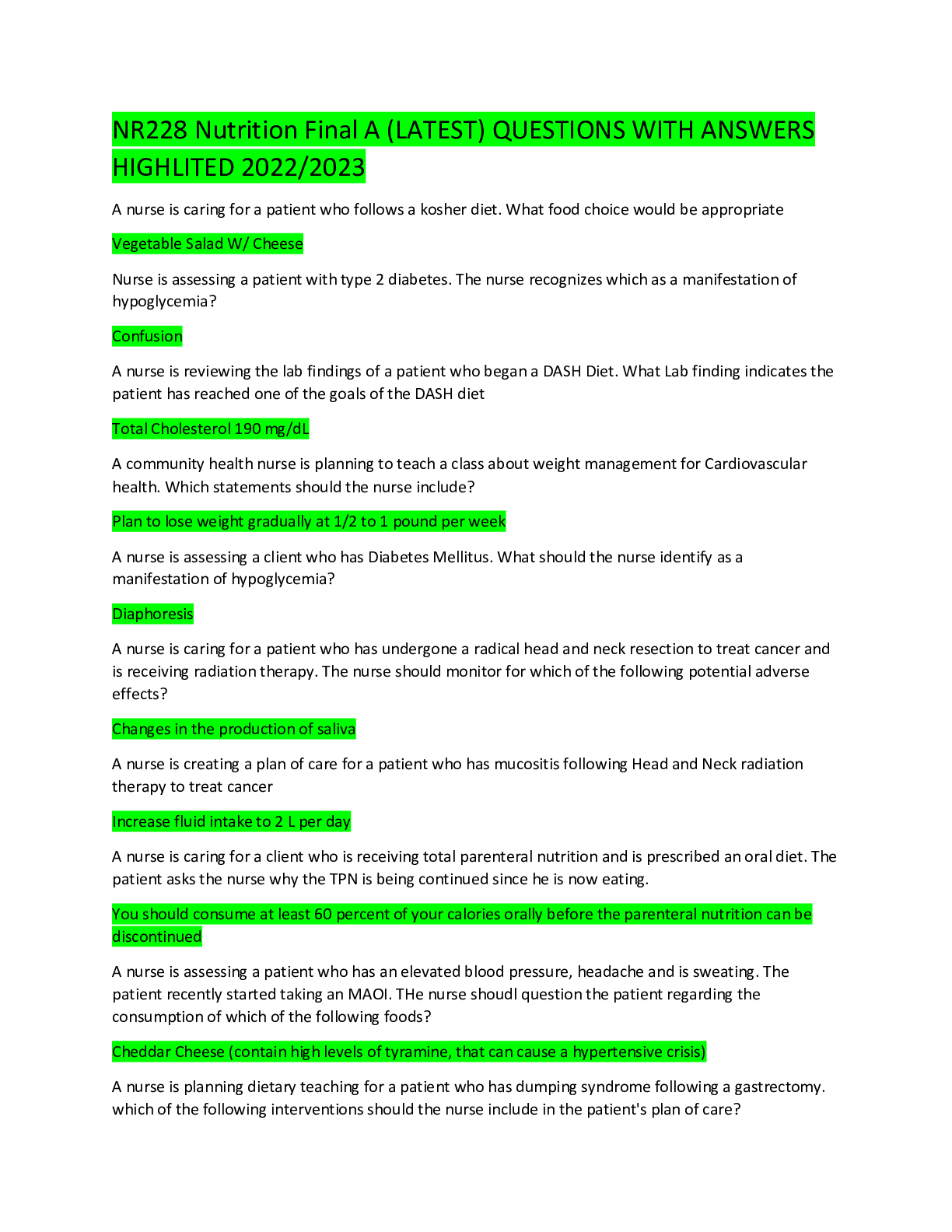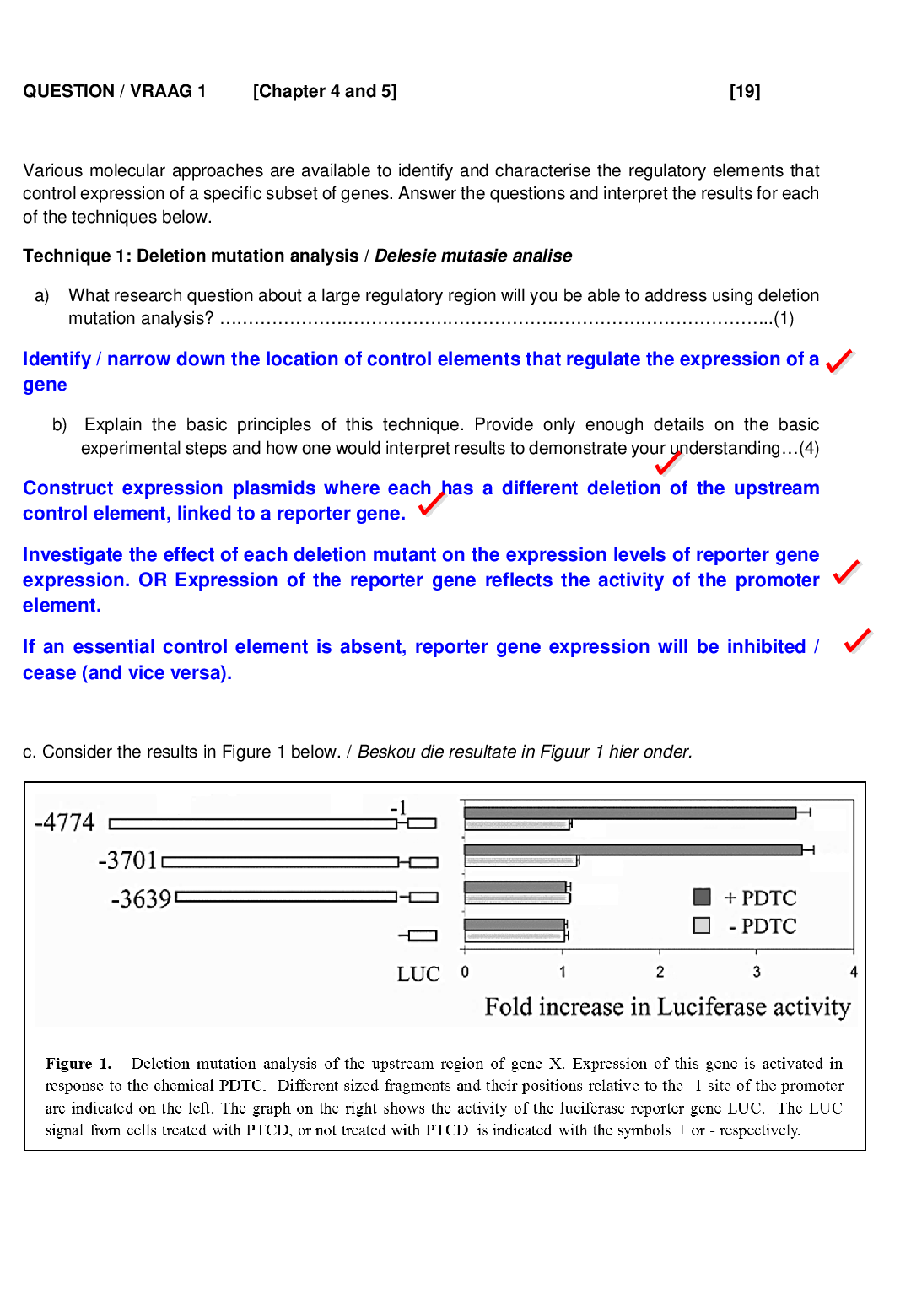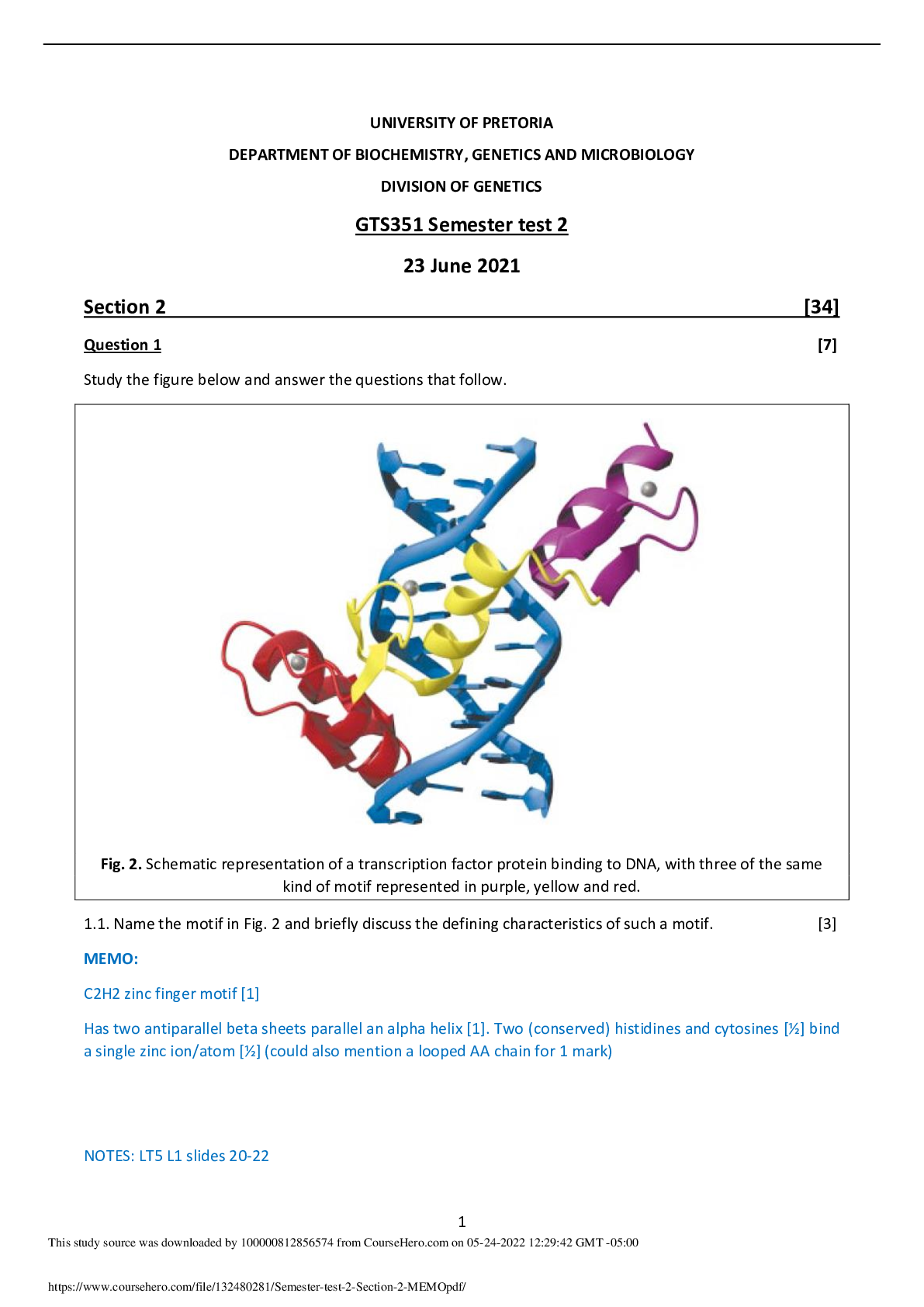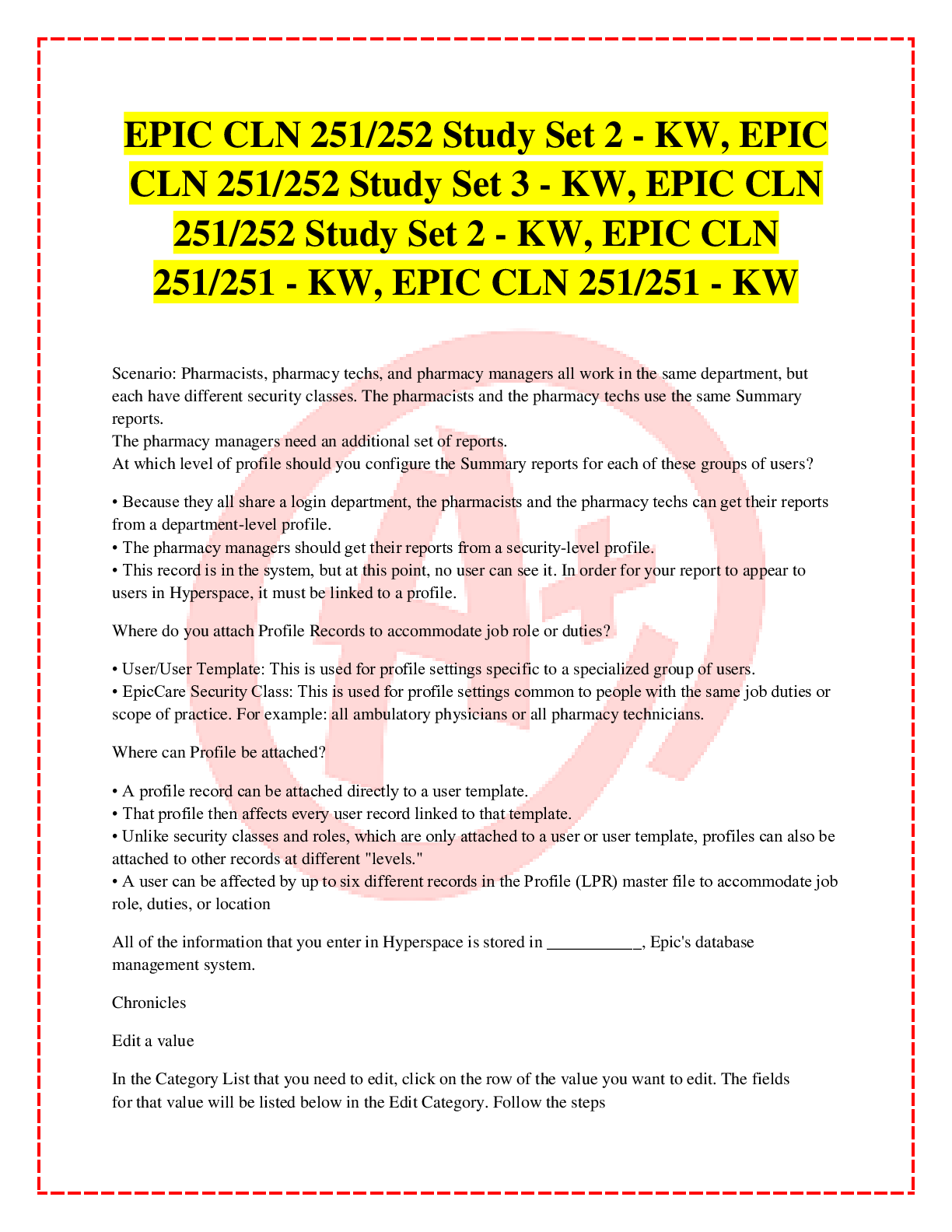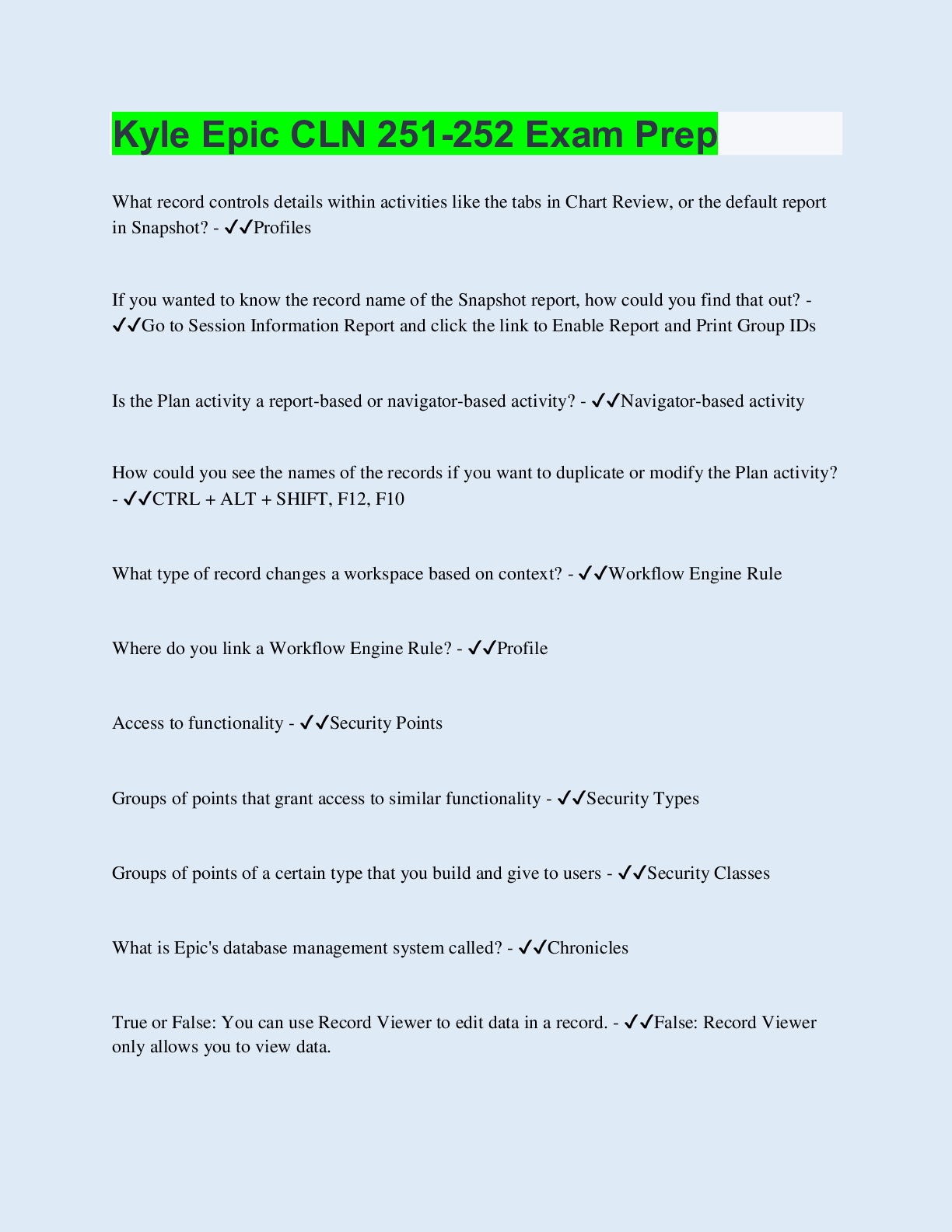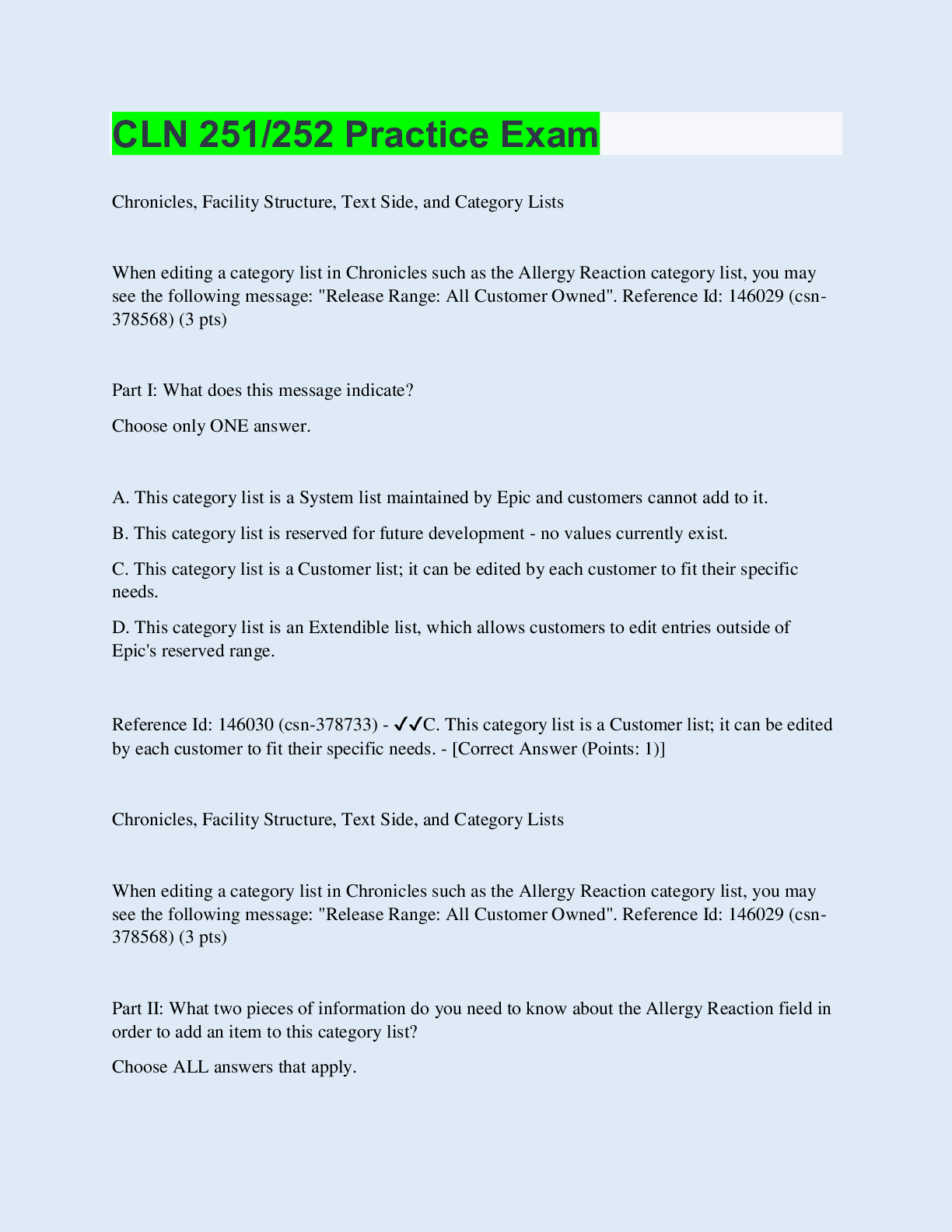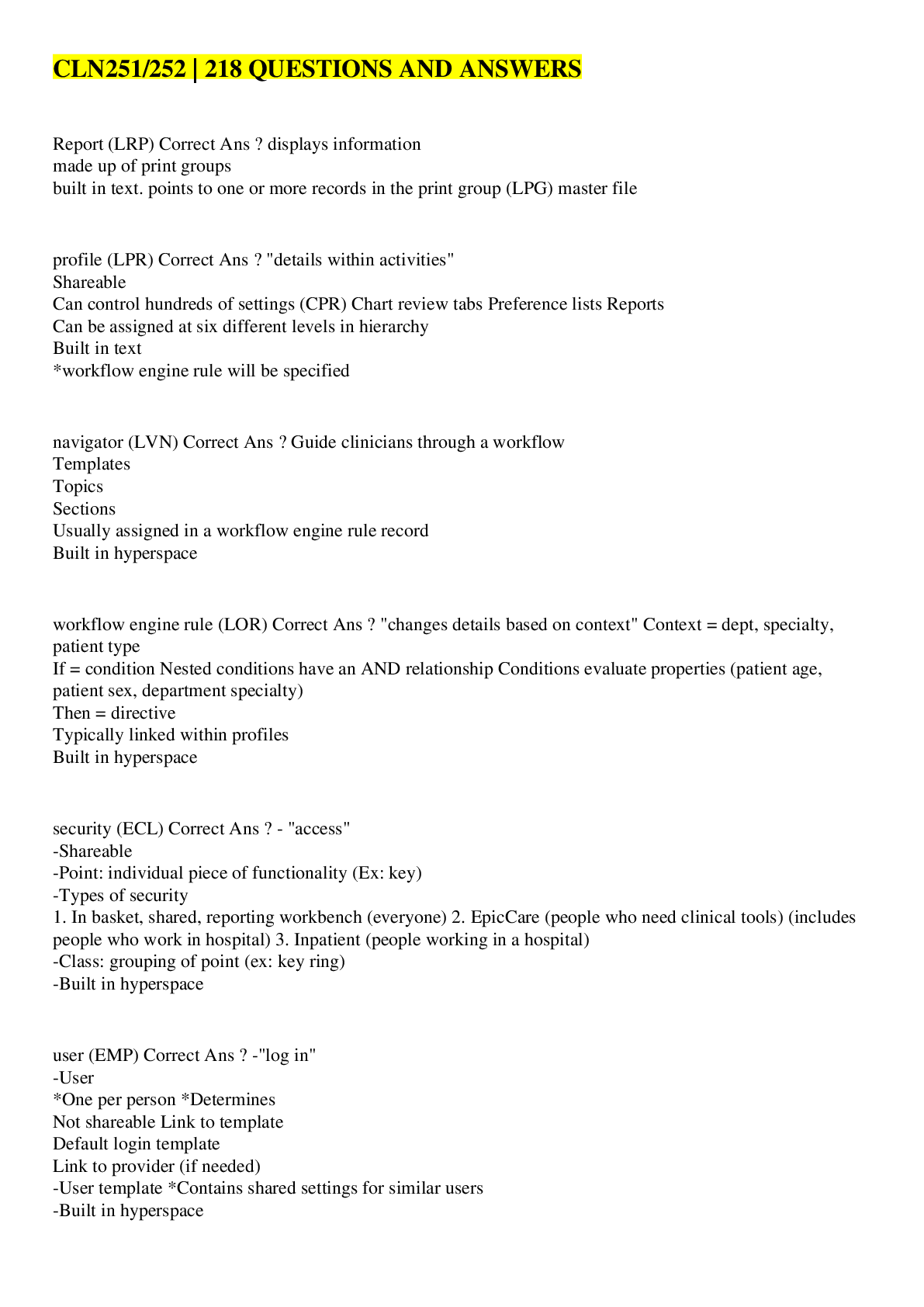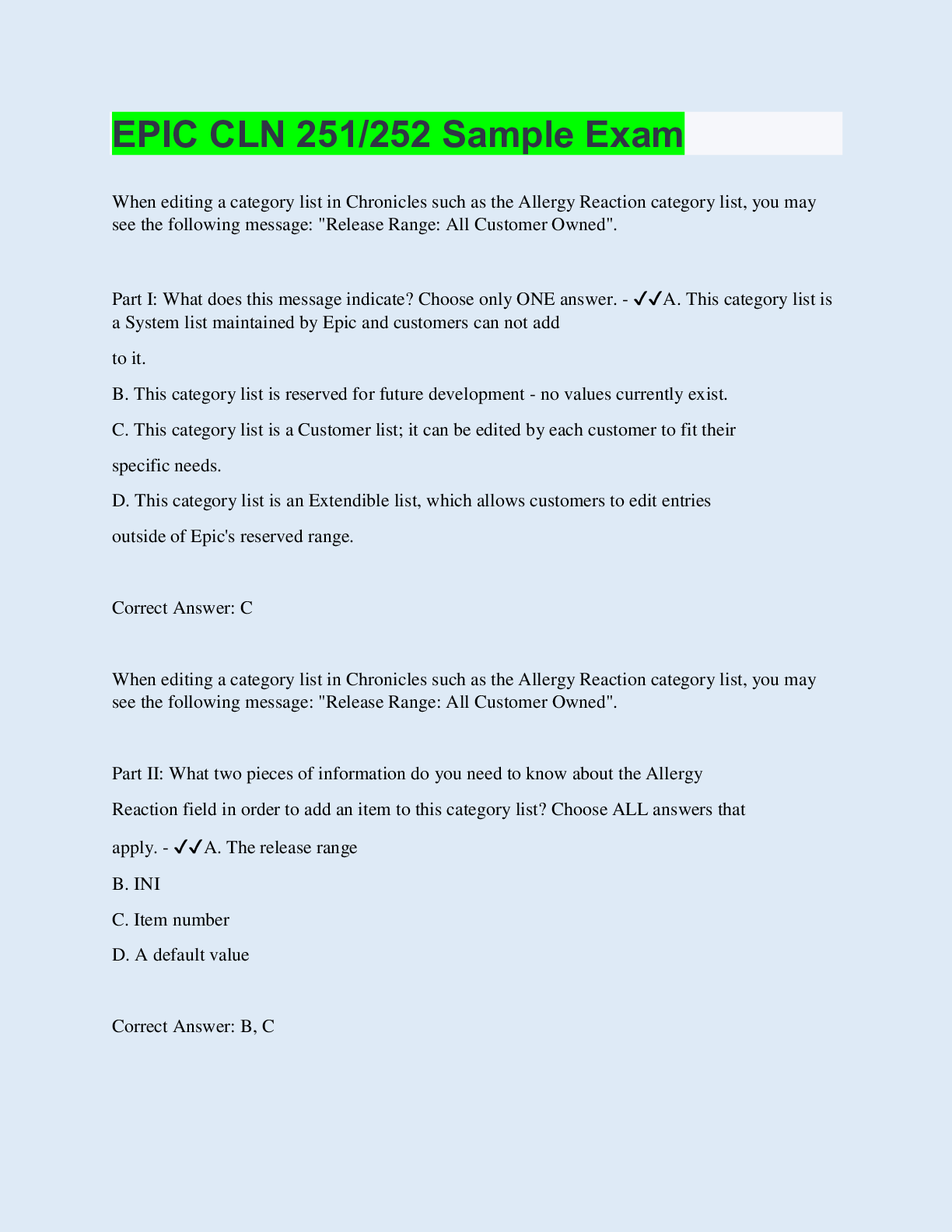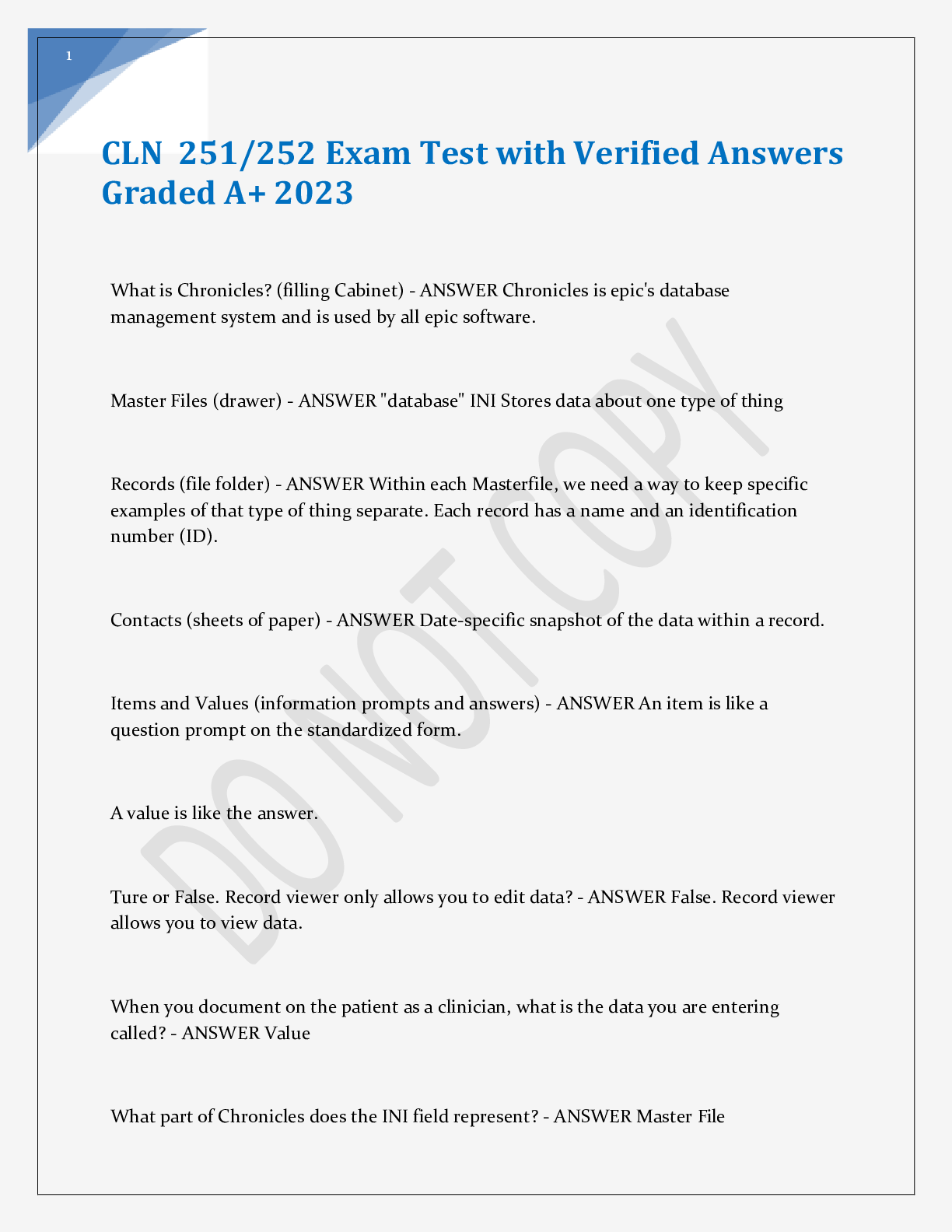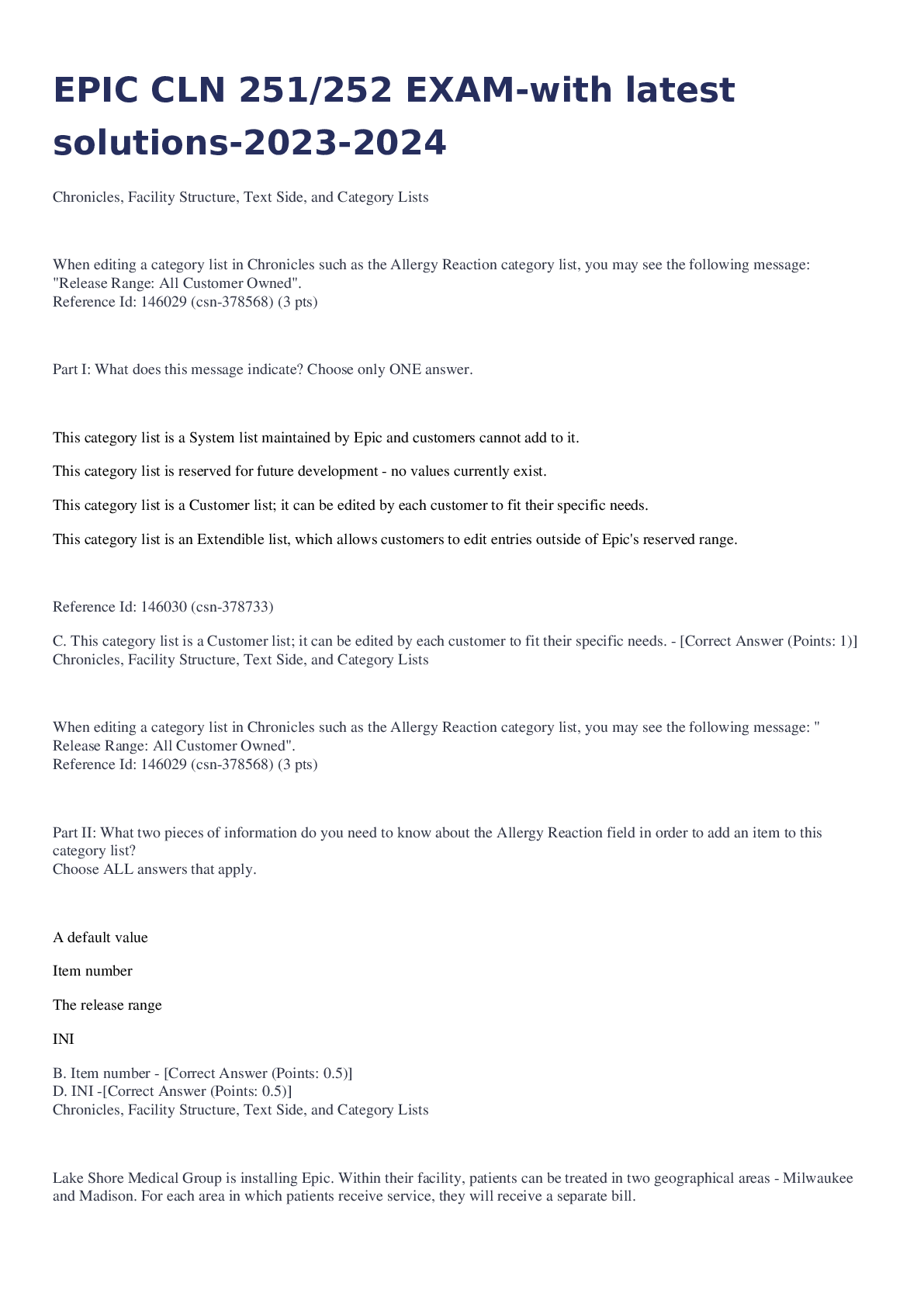Herzing University -NU 216 FINAL EXAMS 1 & 2 Revised and Updated 2021
Document Content and Description Below
AH1 Chapter 4: Patient and Caregiver Teaching MULTIPLE CHOICE 1. A patient with newly diagnosed colon cancer has a nursing diagnosis of deficient knowledge about colon cancer. The nurse shoul... d initially focus on which learning goal for this patient? a. The patient will select the most appropri-ate colon cancer therapy. b. The patient will state ways of preventing the recurrence of the cancer. c. The patient will demonstrate coping skills needed to manage the disease. d. The patient will choose methods to mini-mize adverse effects of treatment. 2. After the nurse provides dietary instructions for a patient with diabetes, the patient can explain the information but fails to make the recommended dietary changes. How would the nurse eval-uate the patient’s situation? a. Learning did not occur because the pa-tient’s behavior did not change. b. Choosing not to follow the diet is the be-havior that resulted from learning. c. The nursing responsibility for helping the patient make dietary changes has been ful-filled. d. The teaching methods were ineffective in helping the patient learn the dietary in-structions. 3. A patient is diagnosed with heart failure after being admitted to the hospital for shortness of breath and fatigue. Which teaching strategy, if implemented by the nurse, is most likely to be ef-fective? a. Assure the patient that the nurse is an ex-pert on management of heart failure. b. Teach the patient at each meal about the amounts of sodium in various foods. c. Discuss the importance of medication control in maintenance of long-term health. d. Refer the patient to a home health nurse for instructions on diet and fluid re-strictions. 4. A patient who was admitted to the hospital with hyperglycemia and newly diagnosed diabetes mellitus is scheduled for discharge the second day after admission. When implementing patient teaching, what is the priority action for the nurse? a. Instruct about the increased risk for car-diovascular disease. b. Provide detailed information about dietary control of glucose. c. Teach glucose self-monitoring and medi-cation administration. d. Give information about the effects of ex-ercise on glucose control. 5. A patient states, “I told my husband I wouldn’t buy as much prepared food snacks, so I will go the grocery store to buy fresh fruit, vegetables, and whole grains.” When using the Transtheoret-ical Model of Health Behavior Change, the nurse identifies that this patient is in which stage of change? a. Preparation b. Termination c. Maintenance d. Contemplation 6. While admitting a patient to the medical unit, the nurse determines that the patient is hard of hearing. How should the nurse use this information to plan teaching and learning strategies? a. Motivation and readiness to learn will be affected. b. The family must be included in the teach-ing process. c. The patient will have problems under-standing information. d. Written materials should be provided with verbal instructions. 7. A patient who is morbidly obese states, “I’ve recently made some changes in my life. I’ve decreased my fat intake and I’ve stopped smoking.” Which statement, if made by the nurse, is the best initial response? a. “Although those are important, it is essen-tial that you make other changes, too.” b. “Are you having any difficulty in main-taining the changes you have already made?” c. “Which additional changes in your life-style would you like to implement at this time?” d. “You have already accomplished changes that are important for the health of your heart.” 8. The nurse is planning a teaching session with a patient newly diagnosed with migraine headaches. To assess a patient’s readiness to learn, which question should the nurse ask? a. “What kind of work and leisure activities do you do?” b. “What information do you think you need right now?” c. “Can you describe the types of activities that help you learn new information?” d. “Do you have any religious beliefs that are inconsistent with the planned treatment?” 9. The nurse considers a nursing diagnosis of ineffective health maintenance related to low motivation for a patient with diabetes. Which finding would the nurse most likely use to support this nursing diagnosis? a. The patient does not perform capillary blood glucose tests as directed. b. The patient occasionally forgets to take the daily prescribed medication. c. The patient states that dietary changes have not made any difference at all. d. The patient cannot identify signs or symptoms of high and low blood glucose. 10. A patient with diabetic neuropathy requires teaching about foot care. Which learning goal should the nurse include in the teaching plan? a. The nurse will demonstrate the proper technique for trimming toenails. b. The patient will list three ways to protect the feet from injury by discharge. c. The nurse will instruct the patient on ap-propriate foot care before discharge. d. The patient will understand the rationale for proper foot care after instruction. 11. The nurse educator teaches students how to be more assertive. Which teaching strategy, if implemented by the nurse educator, would be most effective? a. Role playing b. Peer teaching c. Printed materials d. Lecture-discussion 12. The nurse and the patient who is diagnosed with hypertension develop this goal: “The patient will select a 2-gram sodium diet from the hospital menu for the next 3 days.” Which evaluation method will be best for the nurse to use when determining whether teaching was effective? a. Have the patient list substitutes for favor-ite foods that are high in sodium. b. Check the sodium content of the patient’s menu choices over the next 3 days. c. Ask the patient to identify which foods on the hospital menus are high in sodium. d. Compare the patient’s sodium intake be-fore and after the teaching was imple-mented. TOP: Nursing Process: Evaluation MSC: NCLEX: Health Promotion and Maintenance 13. The nurse prepares written handouts to be used as part of the standardized teaching plan for patients who have been recently diagnosed with diabetes. What statement would be appropriate to include in the handouts? a. Eating the right foods can help in keeping blood glucose at a near-normal level. b. Polyphagia, polydipsia, and polyuria are common symptoms of diabetes mellitus. c. Some diabetics control blood glucose with oral medications, injections, or nutritional interventions. d. Diabetes mellitus is characterized by chronic hyperglycemia and the associated symptoms than can lead to long-term complications. 14. The hospital nurse implements a teaching plan to assist an older patient who lives alone to independently accomplish daily activities. How would the nurse best evaluate the patient’s long-term response to the teaching? a. Make a referral to the home health nursing department for home visits. b. Have the patient demonstrate the learned skills at the end of the teaching session. c. Arrange a physical therapy visit before the patient is discharged from the hospital. d. Check the patient’s ability to bathe and get dressed without any assistance the next day. 15. A patient who smokes a pack of cigarettes per day tells the nurse, “I enjoy smoking and have no plans to quit.” Which nursing diagnosis is most appropriate? a. Health seeking behaviors related to ciga-rette use b. Ineffective health maintenance related to tobacco use c. Readiness for enhanced self-health man-agement related to smoking d. Deficient knowledge related to long-term effects of cigarette smoking 16. An older Asian patient, who is seen at the health clinic, is diagnosed with protein malnutrition. What priority action should the nurse include in the teaching plan? a. Suggest the use of liquid supplements as a way to increase protein intake. b. Encourage the patient to increase the die-tary intake of meat, cheese, and milk. c. Ask the patient to record the intake of all foods and beverages for a 3-day period. d. Focus on the use of combinations of beans and rice to improve daily protein intake. 17. A middle-aged patient who has diabetes tells the nurse, “I want to know how to give my own insulin so I don’t have to bother my wife all the time.” What is the priority action of the nurse? a. Demonstrate how to draw up and admin-ister insulin. b. Discuss the use of exercise to decrease insulin needs. c. Teach about differences between the var-ious types of insulin. d. Provide handouts about therapeutic and adverse effects of insulin. 18. The nurse plans to teach a patient and the caregiver how to manage high blood pressure (BP). Which action should the nurse take first? a. Give written information about hyperten-sion to the patient and caregiver. b. Have the dietitian meet with the patient and caregiver to discuss a low sodium di-et. c. Teach the caregiver how to take the pa-tient’s BP using a manual blood pressure cuff. d. Ask the patient and caregiver to select in-formation from a list of high BP teaching topics. 19. A postoperative patient and caregiver need discharge teaching. Which actions included in the teaching plan can the nurse delegate to unlicensed assistive personnel (UAP)? a. Evaluate whether the patient and caregiver understand the teaching. b. Show the caregiver how to accurately check the patient’s temperature. c. Schedule the discharge teaching session with the patient and caregiver. d. Give the patient a pamphlet reinforcing teaching already done by the nurse. 20. A family caregiver tells the home health nurse, “I feel like I can never get away to do anything for myself.” Which action is best for the nurse to take? a. Assist the caregiver in finding respite ser-vices. b. Assure the caregiver that the work is ap-preciated. c. Encourage the caregiver to discuss feel-ings openly with the nurse as needed. d. Teach the caregiver that family members can also provide excellent patient care. MULTIPLE RESPONSE 1. The nurse plans to provide instructions about diabetes to a patient who has a low literacy level. Which teaching strategies should the nurse use (select all that apply)? a. Discourage use of the Internet as a source of health information. b. Avoid asking the patient about reading abilities and level of education. c. Provide illustrations and photographs showing various types of insulin. d. Schedule one-to-one teaching sessions to practice insulin administration. e. Obtain CDs and DVDs that illustrate how to perform blood glucose testing. [Show More]
Last updated: 1 year ago
Preview 1 out of 10 pages
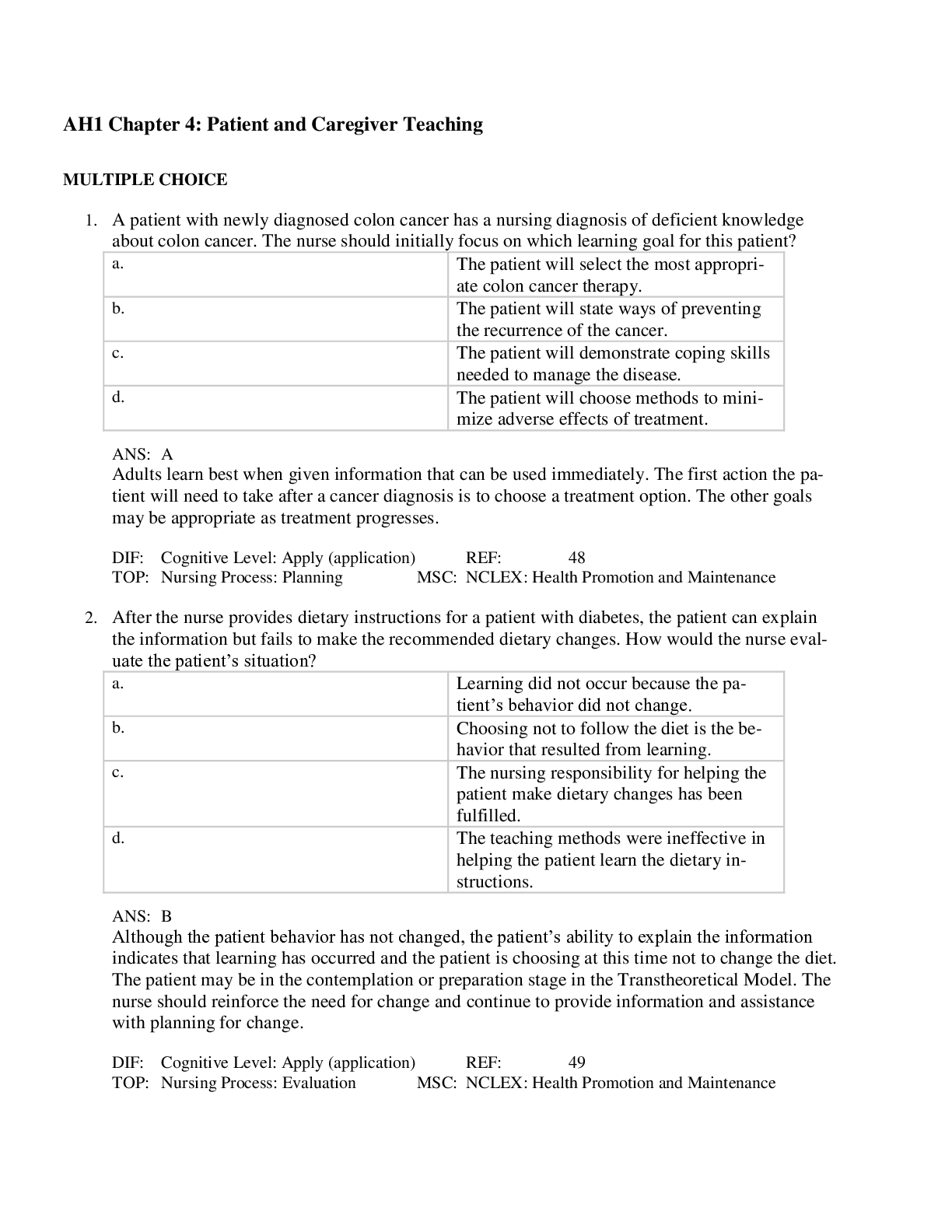
Reviews( 0 )
Document information
Connected school, study & course
About the document
Uploaded On
May 03, 2021
Number of pages
10
Written in
Additional information
This document has been written for:
Uploaded
May 03, 2021
Downloads
0
Views
27

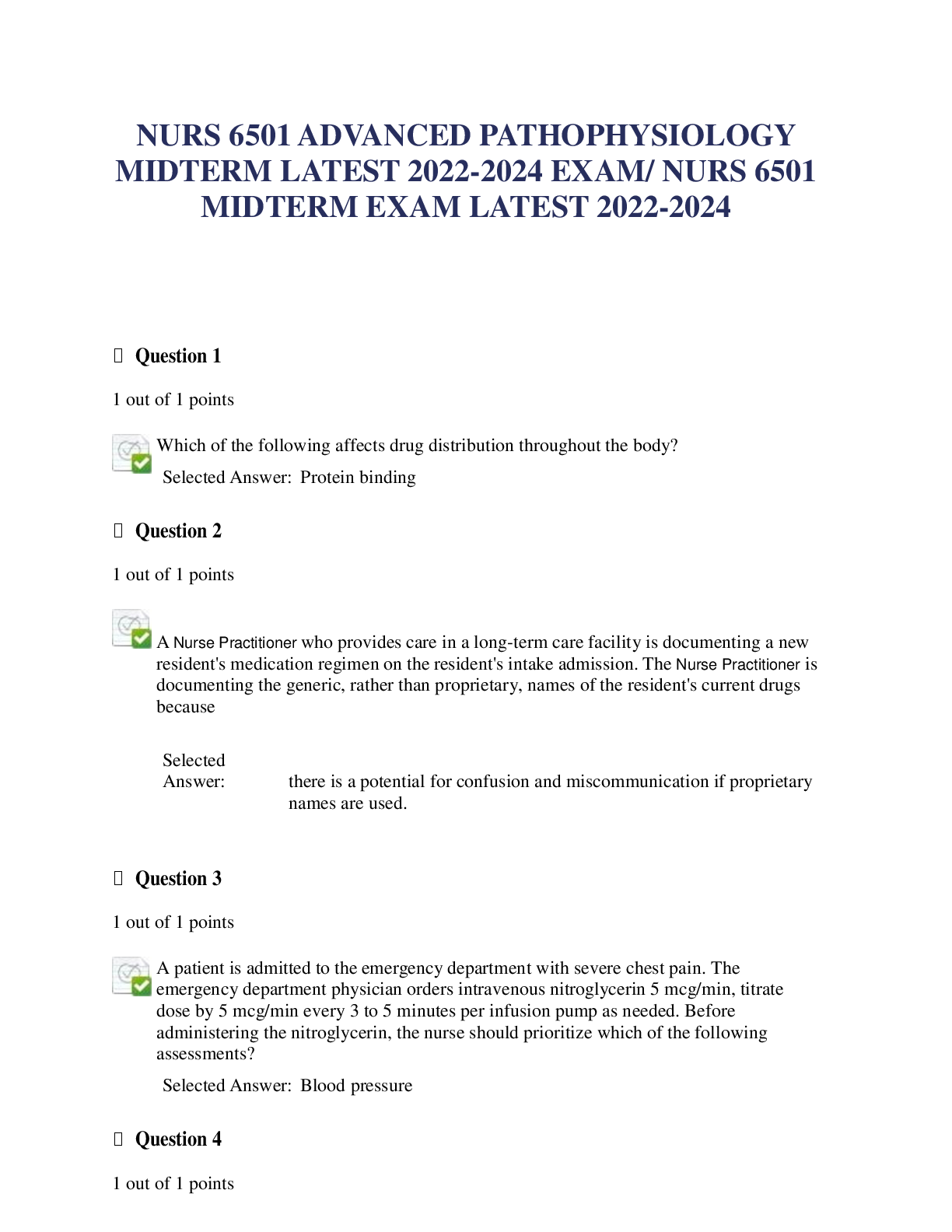
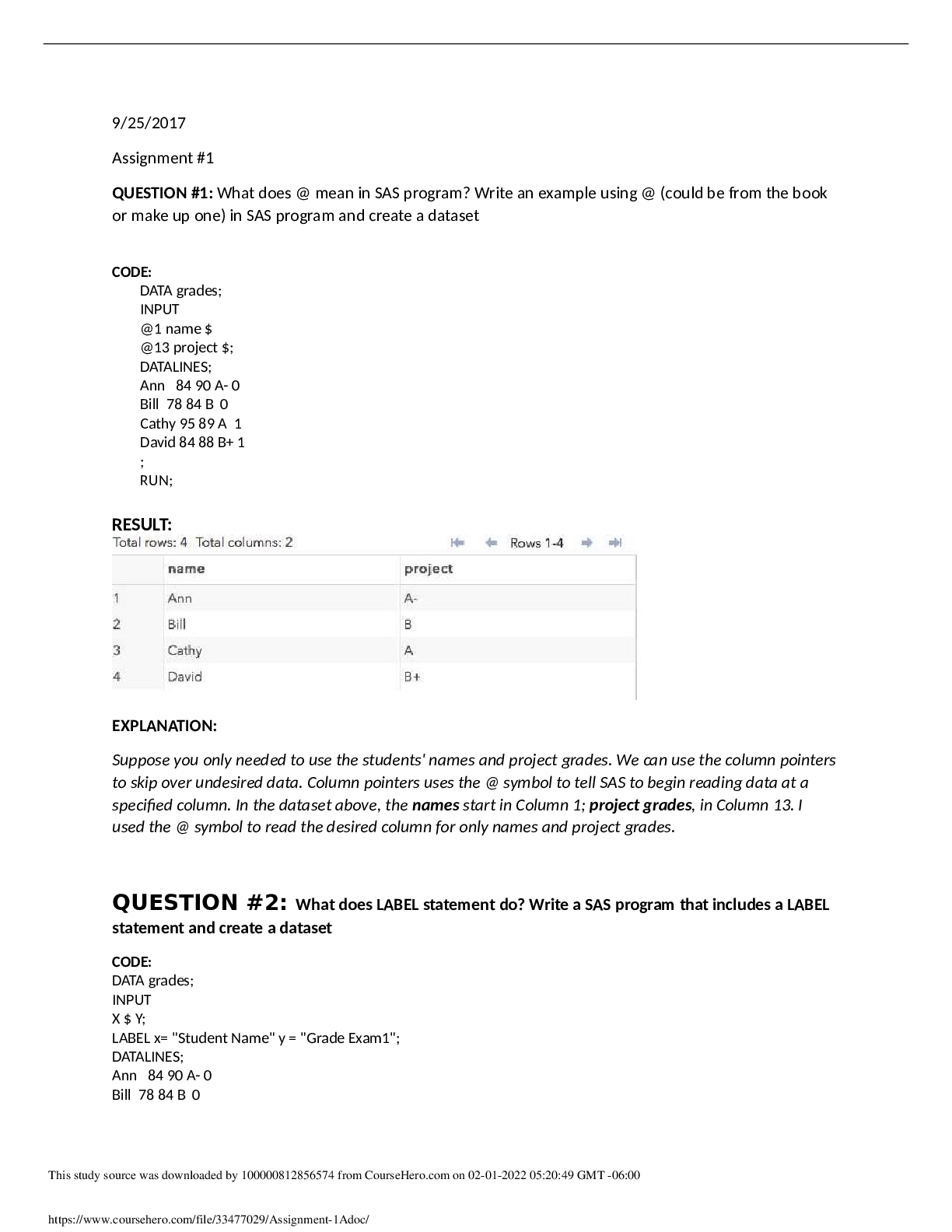
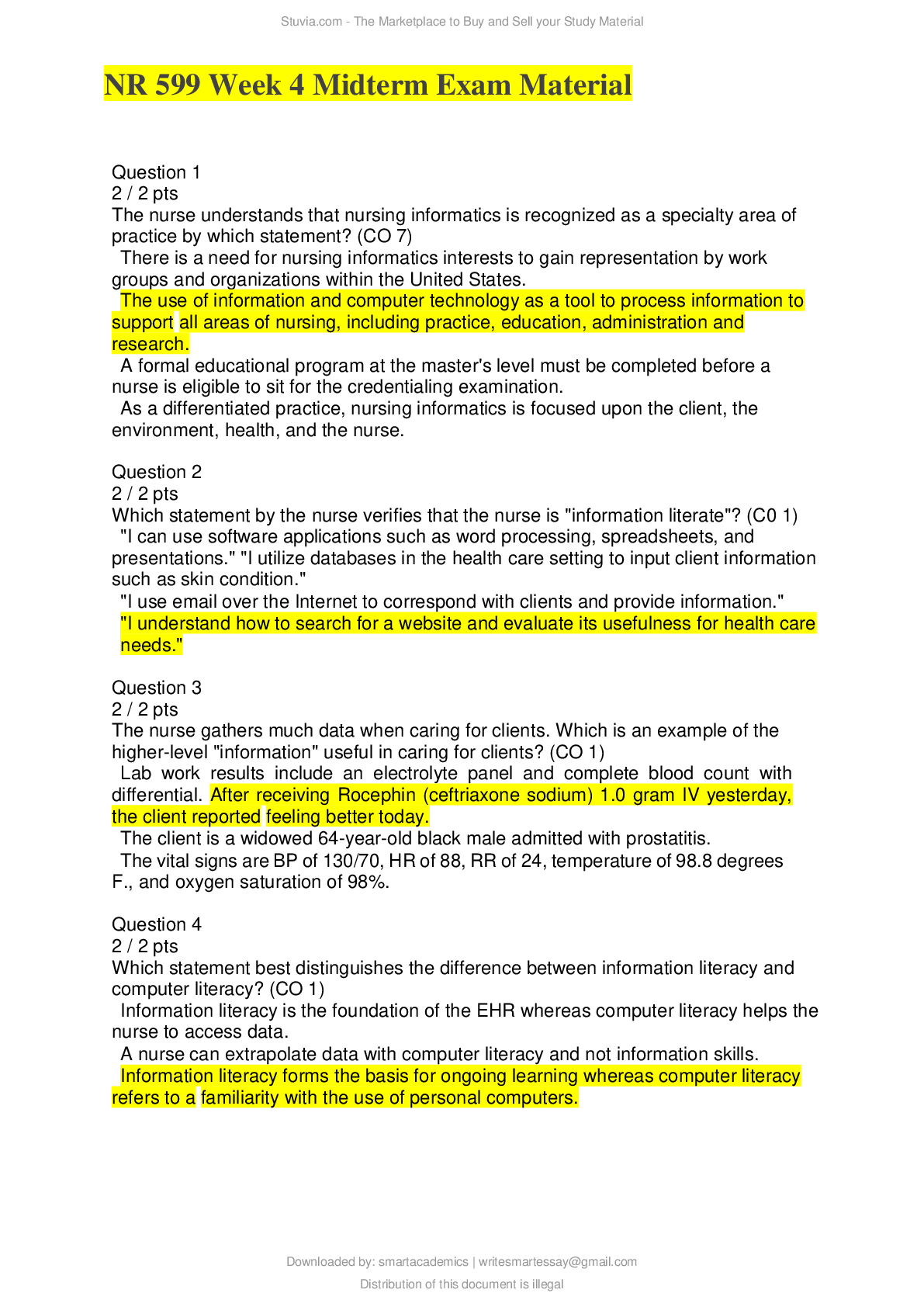
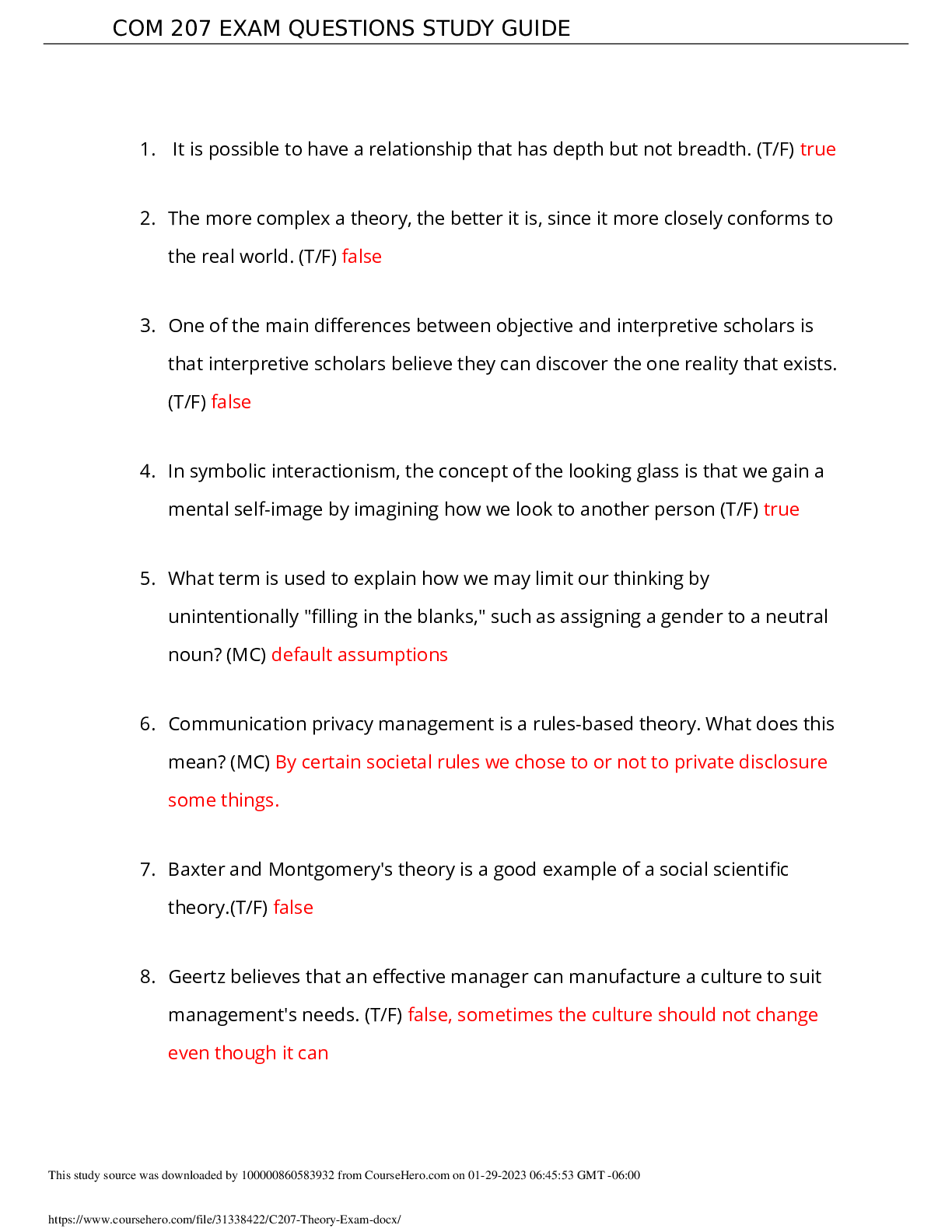
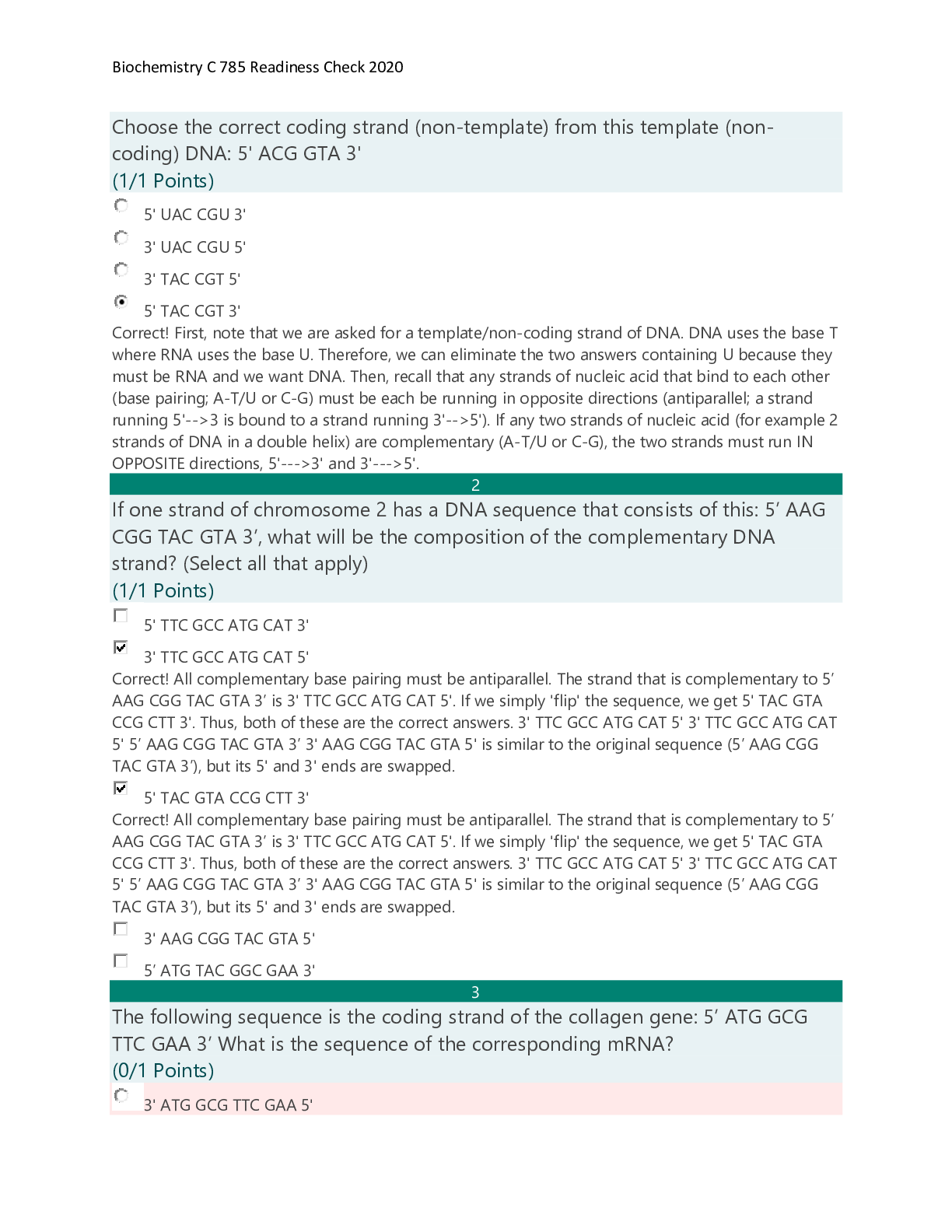
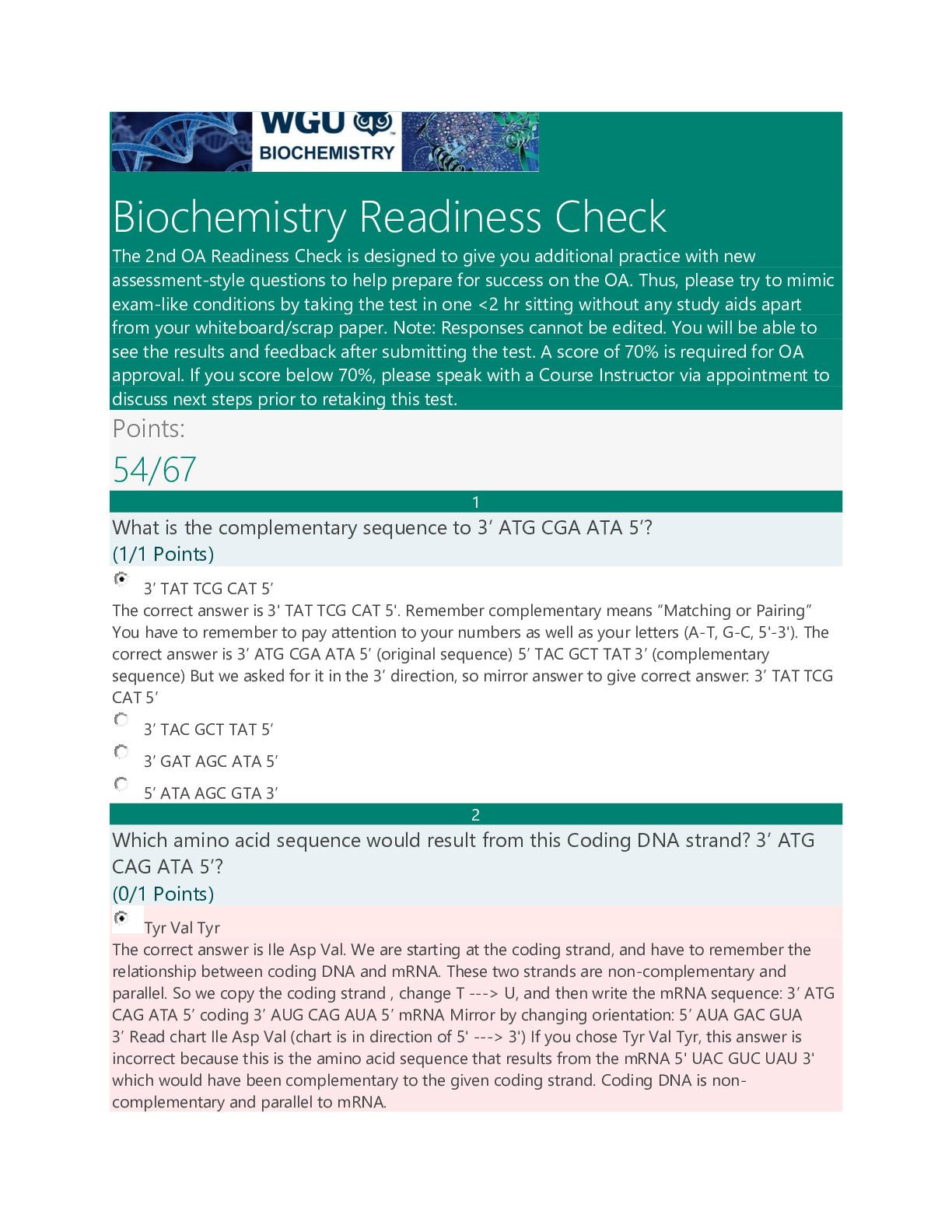
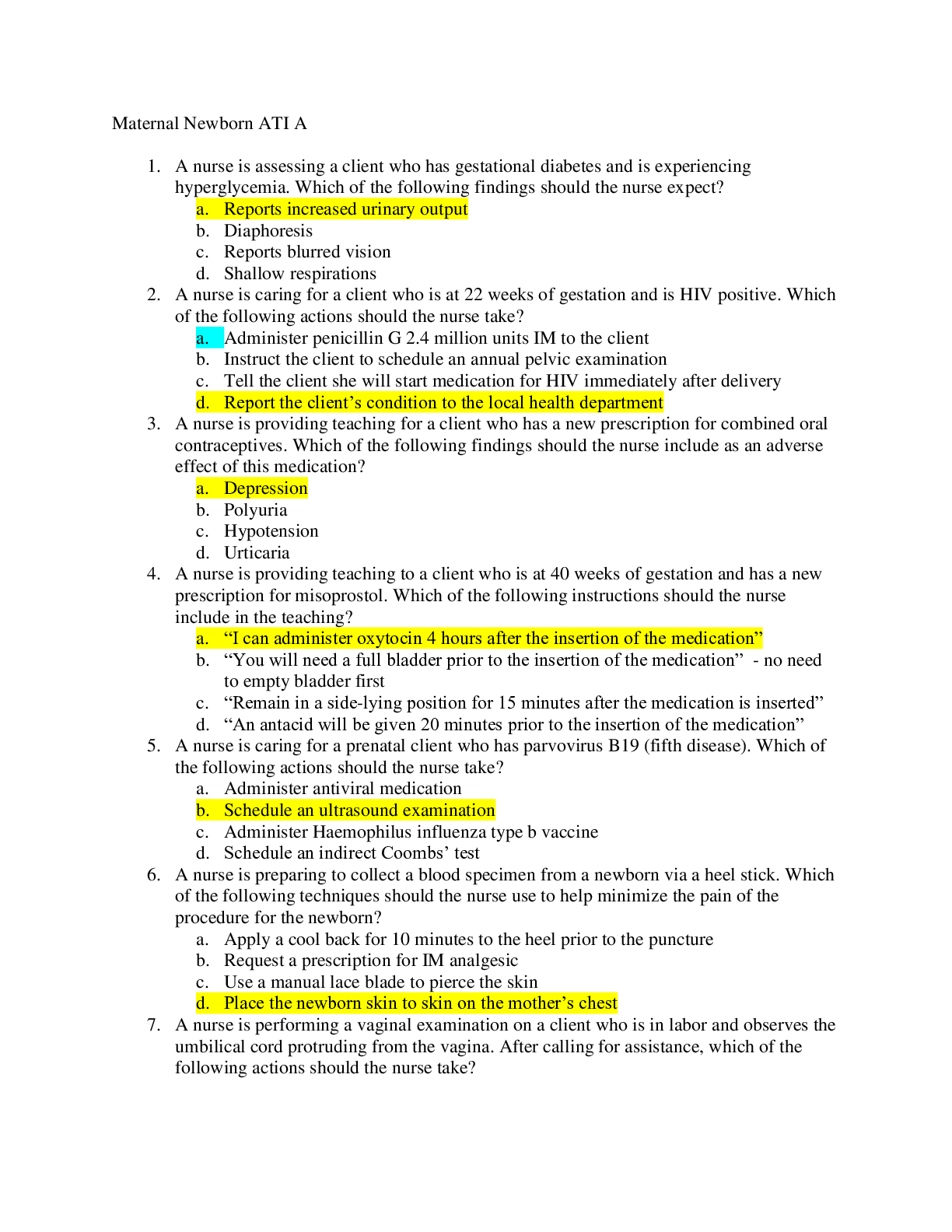

.png)

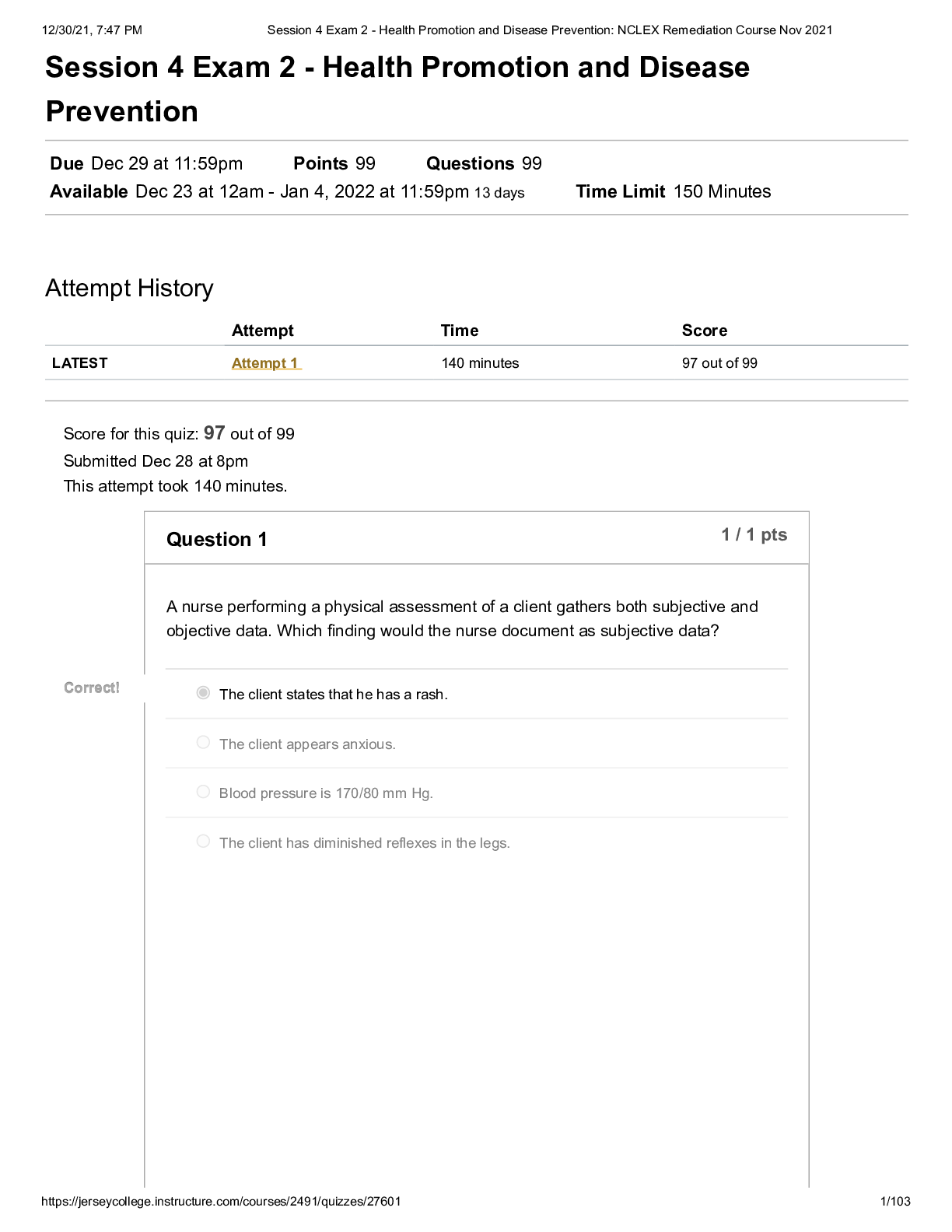
 ORGMED ORGANIC PHARMACEUTICAL PHARMACY.png)
